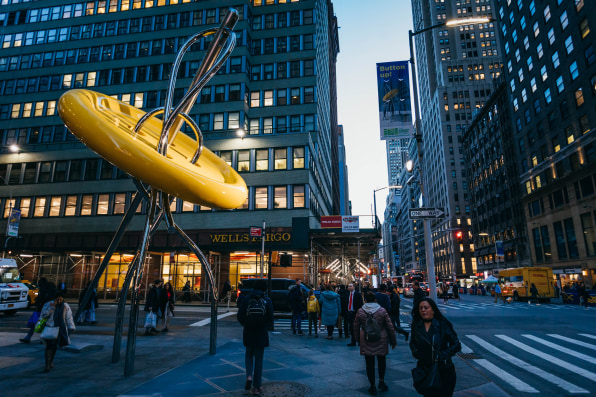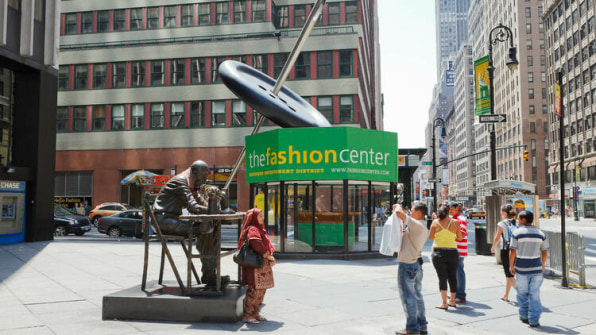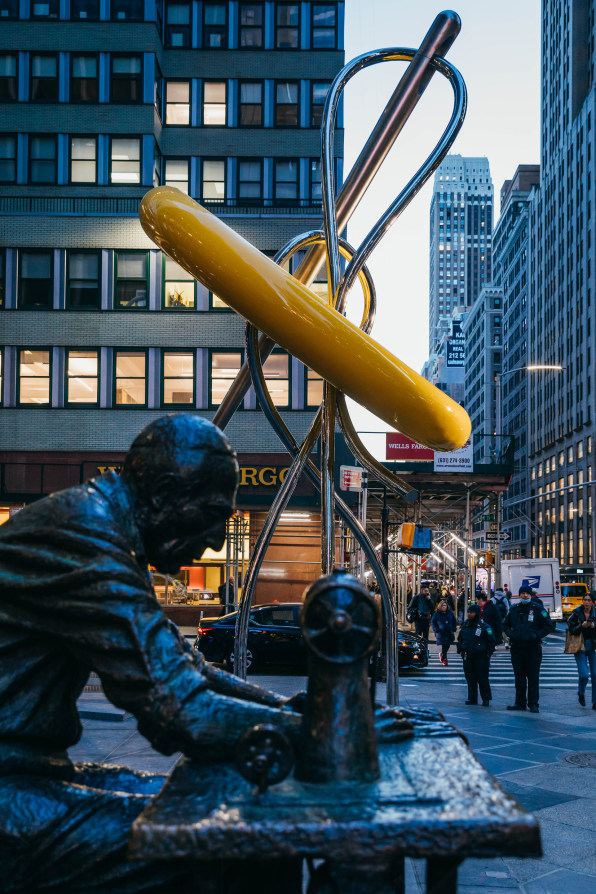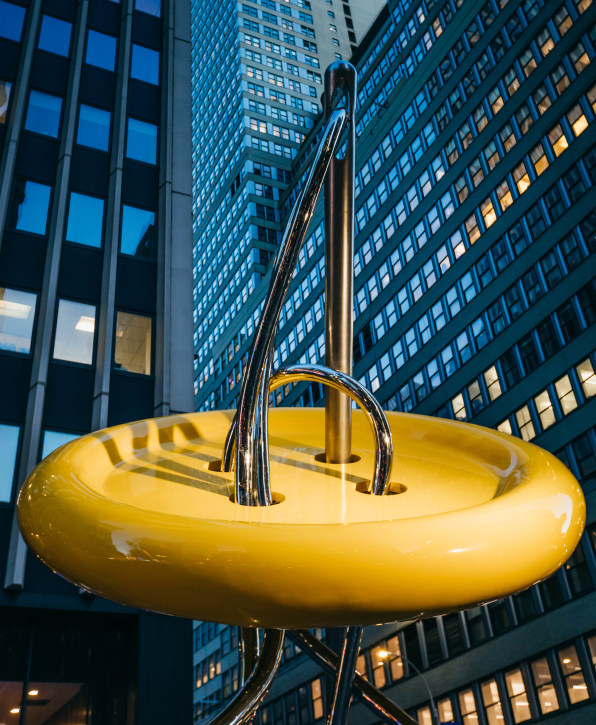[ad_1]
Of the minor mending one might do, replacing a button is one of the easier operations. The buttonholes themselves are a kind of dummy’s guide to sewing, and the only real challenge is making sure to pull enough string through those holes to keep the new button in place.
Replacing a button that’s 15 feet wide and hanging over a busy corner in New York City is less straightforward.

This was the challenge presented to the experiential design firm Local Projects in 2017 by the Garment District Alliance, a nonprofit business-improvement district representing a neighborhood long associated with the fashion, textiles, and fabrics industries. One of the district’s landmarks, a kitschy oversize sculpture known as the Button and Needle, was more than 20 years old and on the verge of collapse. Built in 1996, it was a playful add-on to a 1970s-era low-tech kiosk providing information about the district.

“People from all over the world would come to the Garment District to buy supplies in bulk. So they would go to this kiosk, and there would be a person sitting in there who’d say you’re looking for spandex, you’re looking for worsted wool, this is where you should go,” says Local Projects creative director Nathan Adkisson. “It was this hybrid public service art piece, but not really fully just one or the other. And over time there was no need for that person to be in the kiosk anymore.”
The kiosk, on-theme with a thread-spool-shaped desk inside, began to wear, and it was evident that the decreasingly useful kiosk could no longer support the increasingly beloved Button and Needle sculpture. “Getting rid of the whole thing was actually on the table,” Adkisson says. “Our point of view was here’s this amazing icon, it would be a huge shame to lose it. So we saw our job as more of a revitalization and reimagination of the icon.”

That reimagination is now complete. The Button and Needle sculpture has been reborn as a freestanding piece of public art on a corner that can see upwards of a million people walking by per day. The structural support once provided by the kiosk is now taken over by an even-more-on-theme thread of chrome-coated metal. The sculpture is uplit and the chrome thread shines back the lights of the surrounding city at night as it swoops up and down through the buttonholes. “We wanted to have a certain dynamic feel to it, that it really feels like it’s about to tie down to the fabric of the city,” says Peter Vikar, physical design director at Local Projects.

Local Projects worked with fabricators UAP to re-form the sculpture. The 32-foot stainless-steel needle is the same piece of material from the original sculpture. The button has been recast and changed from a dark black to a bright yellow. Adkisson says that’s an homage to the color scheme of the early 1900s transit system that carried many Garment District workers from their homes in Brooklyn and Queens.

The whole process is a far cry from a simple dress-shirt button replacement. The project’s long six-year timeline for the project is a reflection of pandemic challenges but also of jurisdictional ones. The original sculpture stood partially on private land and partially on city property, as a way of ensuring it wouldn’t be torn down by some button-hating future landowner. The new sculpture retains that land mix, with the needle and strands of the thread touching down on both private and public parts of the city. It’s an unseen part of the design that, like its new structural supports, will ensure the sculpture remains standing as a marker of the neighborhood’s history.
[ad_2]
Source link

